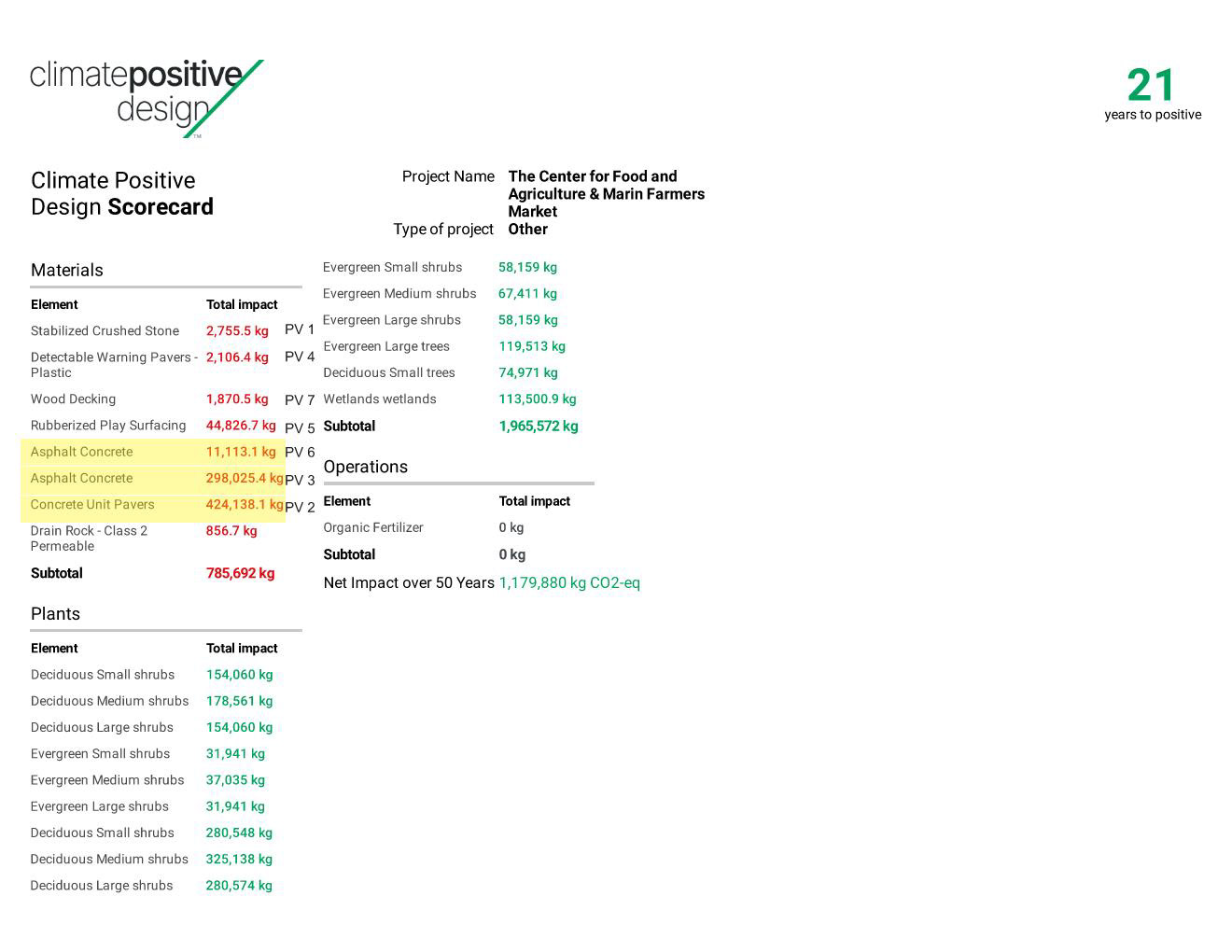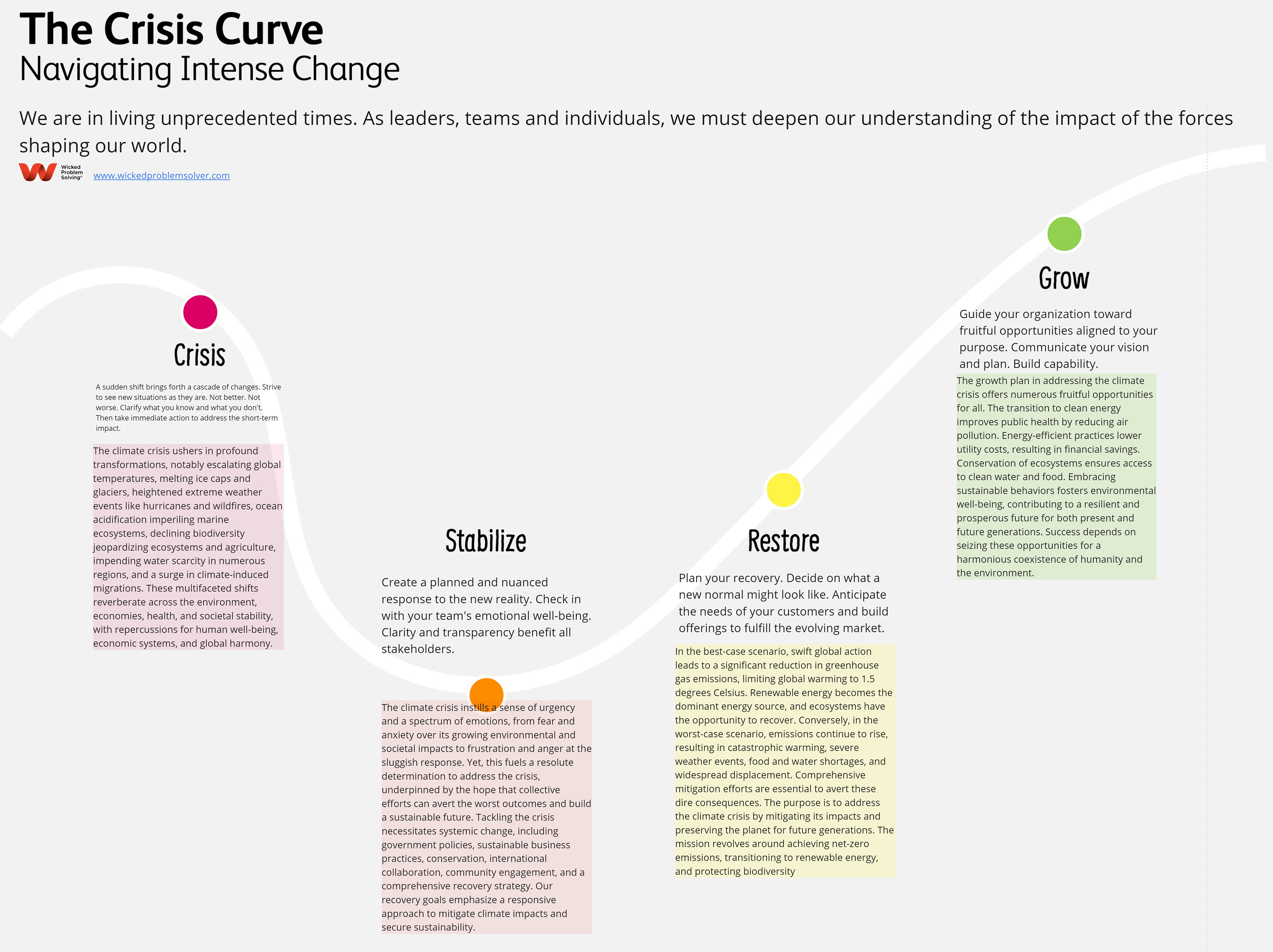
One of the most significant environmental costs of the building industry is its carbon footprint. Increasing carbon dioxide in the atmosphere is a direct cause of global warming and our slowly depleting ecosystems. The landscape architecture community is beginning to make advances in calculating the carbon costs of our designs and innovating methods and materials to bring their adverse impacts down.
Climate-positive design means that the project goes beyond achieving net zero carbon emissions (the amount of C02 a project emits is equal to the amount it eventually absorbs within a given number of years) to create a beneficial environment. i.e. more C02 is absorbed than emitted. The Pathfinder tool calculates the cost and effect of material options to pick the best one for the project. The tool works by calculating the lifetime CO2 eq emissions of all the materials and determining how long the project takes to reach positive.
Through this process, we can establish specific sequestration and emission reduction targets for our projects. “A target of five years is suggested to offset carbon footprints for greener projects like parks, gardens, campuses, and mixed-use developments.”
For the project to become truly successful we found out that just adding vegetation was not enough, replacing certain materials with lower carbon-cost alternatives made drastic differences in the time required to become carbon-positive.
Our process included reaching out to manufacturers to request Environmental Product Declarations (EPDs) and similar documents. These documents were crucial in calculating the embodied carbon and lifetime carbon emissions associated with various materials. In cases where such data was not readily available, the APDW team devised a system to estimate carbon emissions by comparing materials and processes.
Once we had identified the carbon emissions associated with the most frequently used materials in a project, we were able to determine the amount of planting and landscape sinks needed to offset and align with the climate-positive challenge goals. This comprehensive approach allowed us to make informed decisions and work towards carbon neutrality in our projects.
Agenda
1. Provide a framework for all APDW projects to meet the climate-positive design of becoming carbon neutral within 5 years.
2. Create a material library for all products and materials that can be used in projects to offset/sequester carbon emissions. Materials involve organic materials, processes, and inorganic products. Research involves identifying manufacturers, carbon emission values, and product EPDs.
3. Update projects in the Pathfinder app to determine the course of action to reach carbon neutrality and identify the number of years required.

APDW - Eco concrete summary page
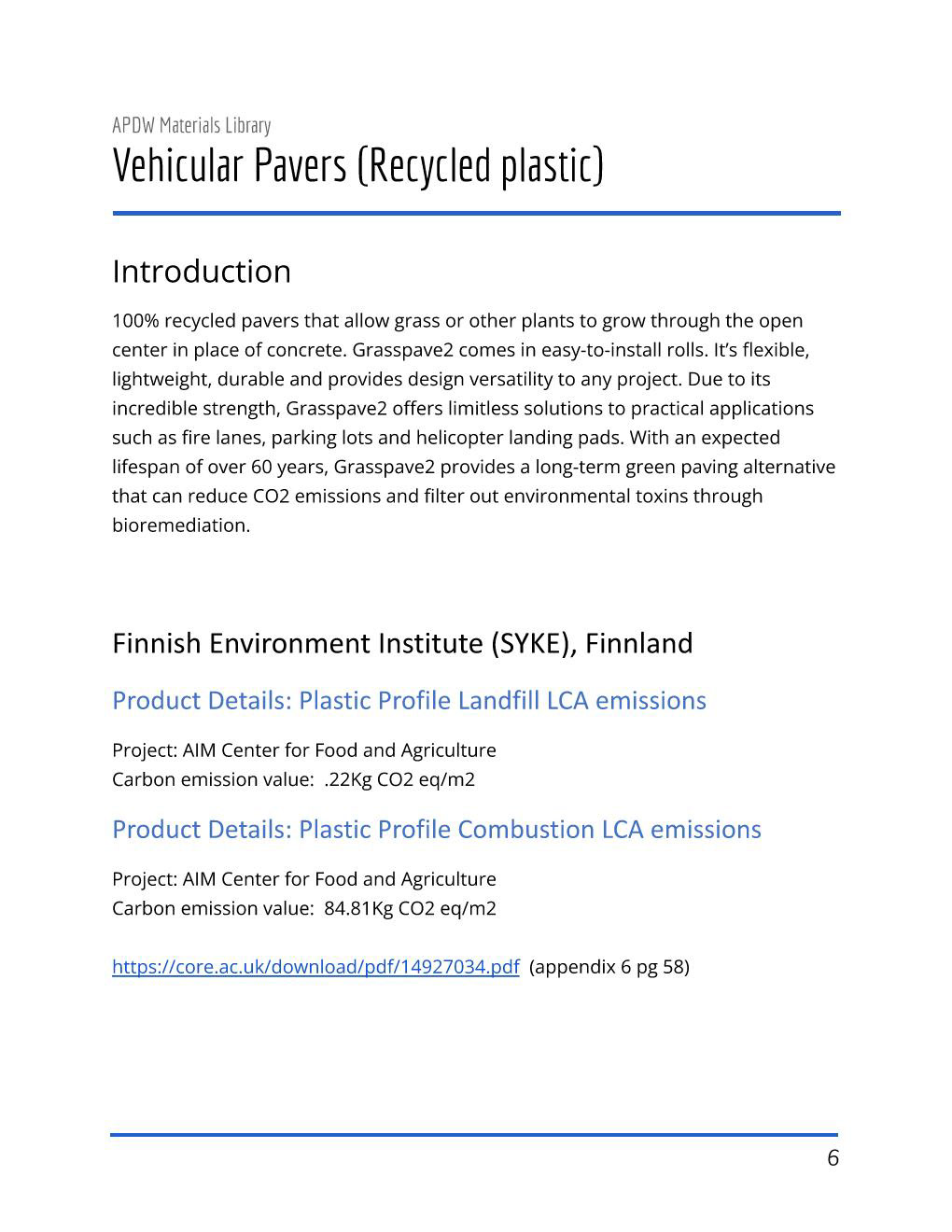
APDW - Recycled plastic summary page
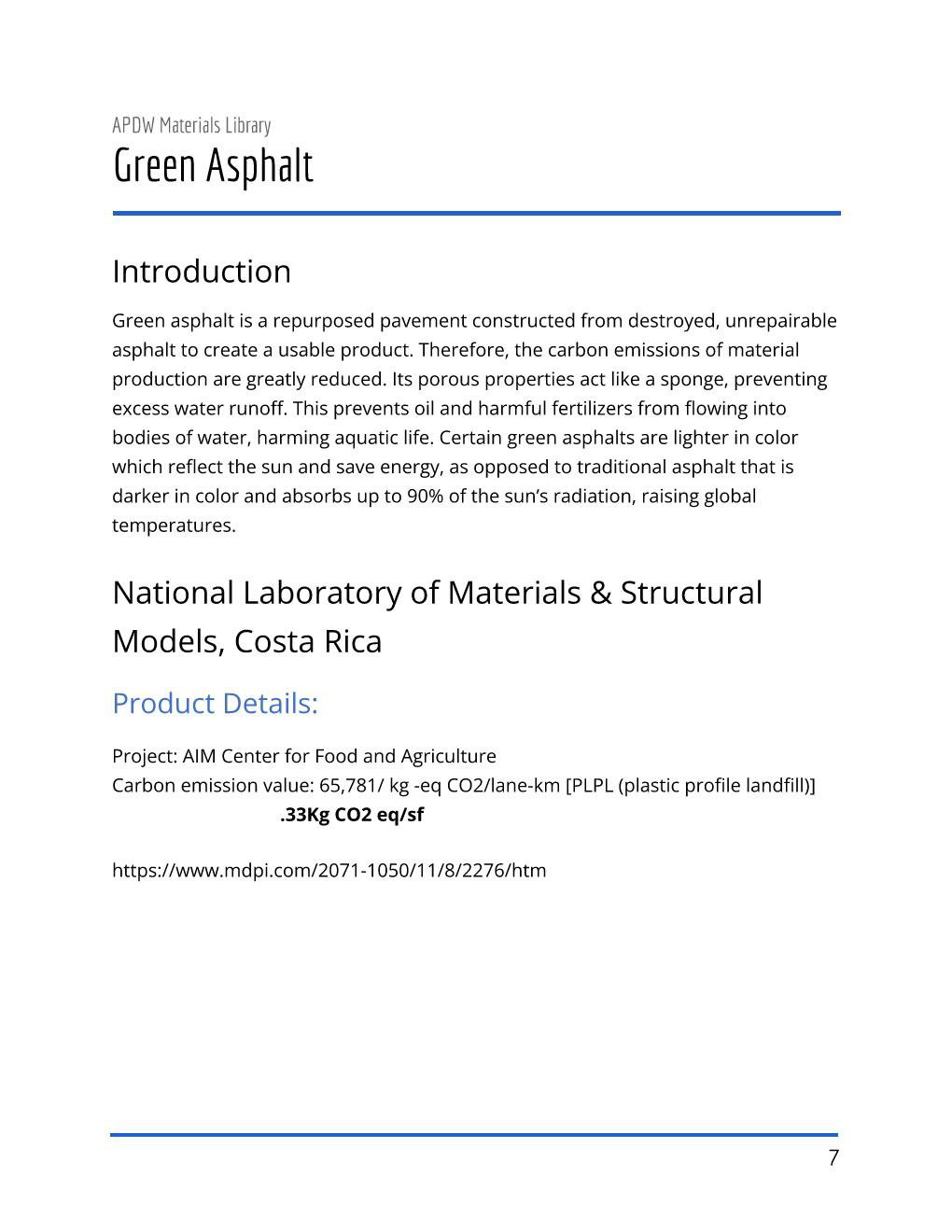
APDW - Green asphalt summary page
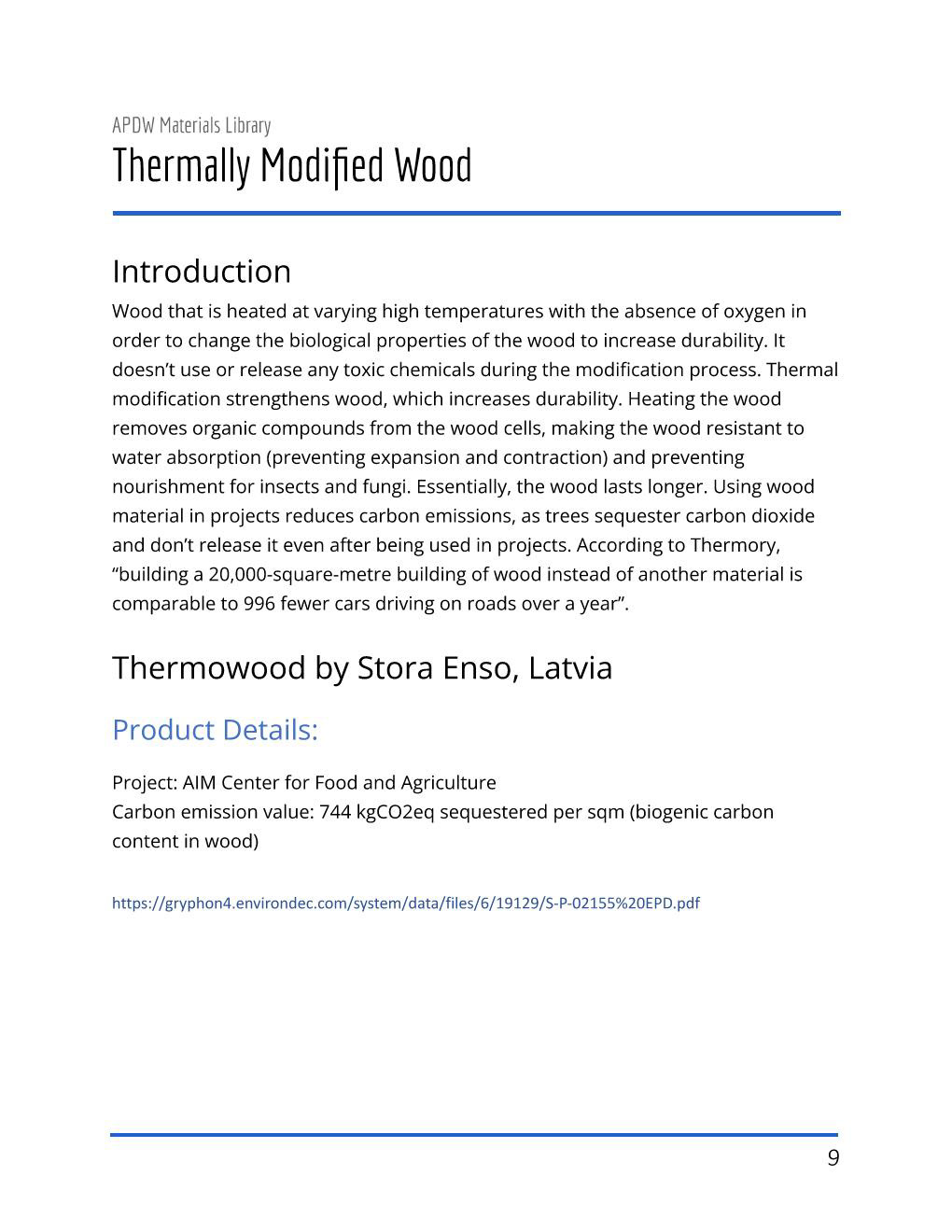
APDW - Thermally modified wood summary page
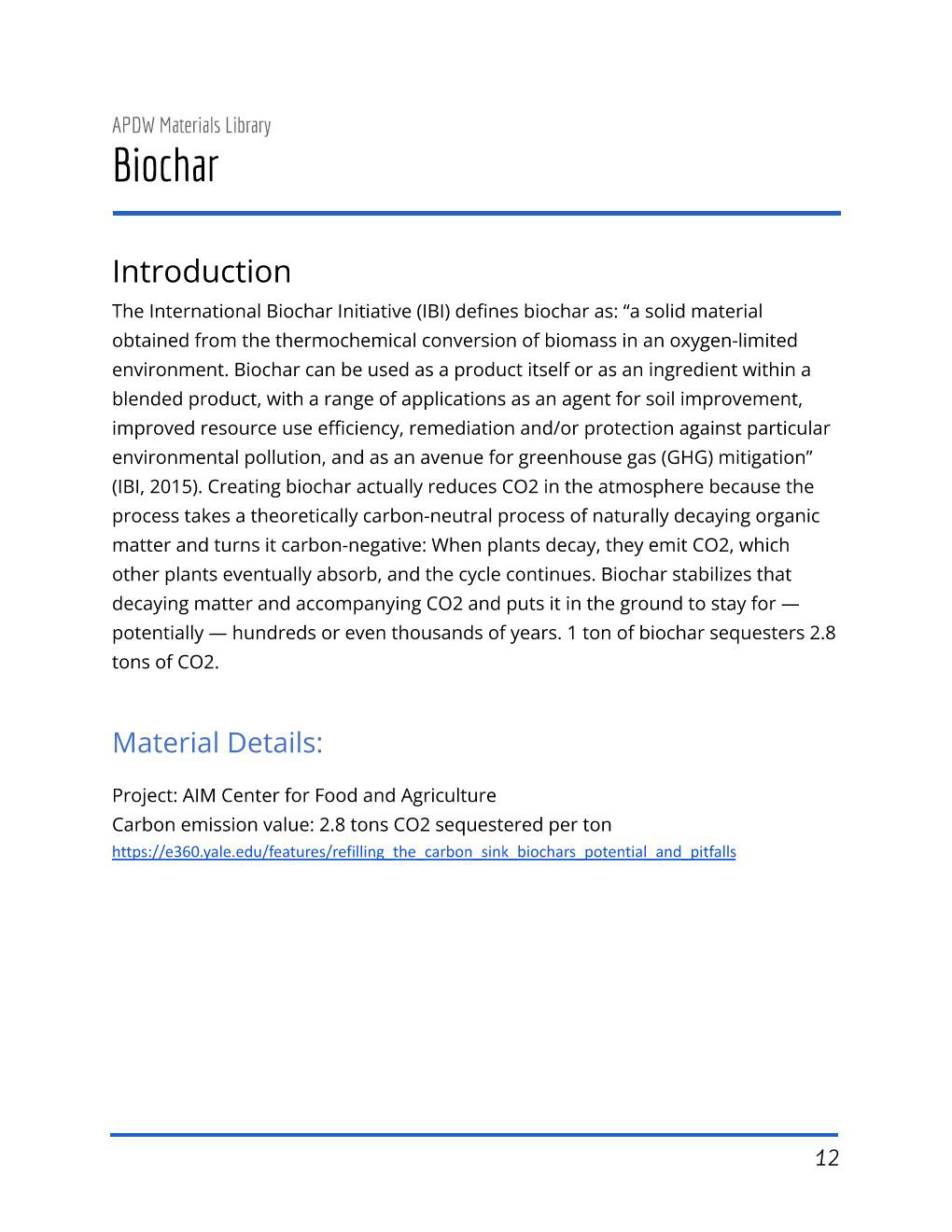
APDW - Biochar summary page
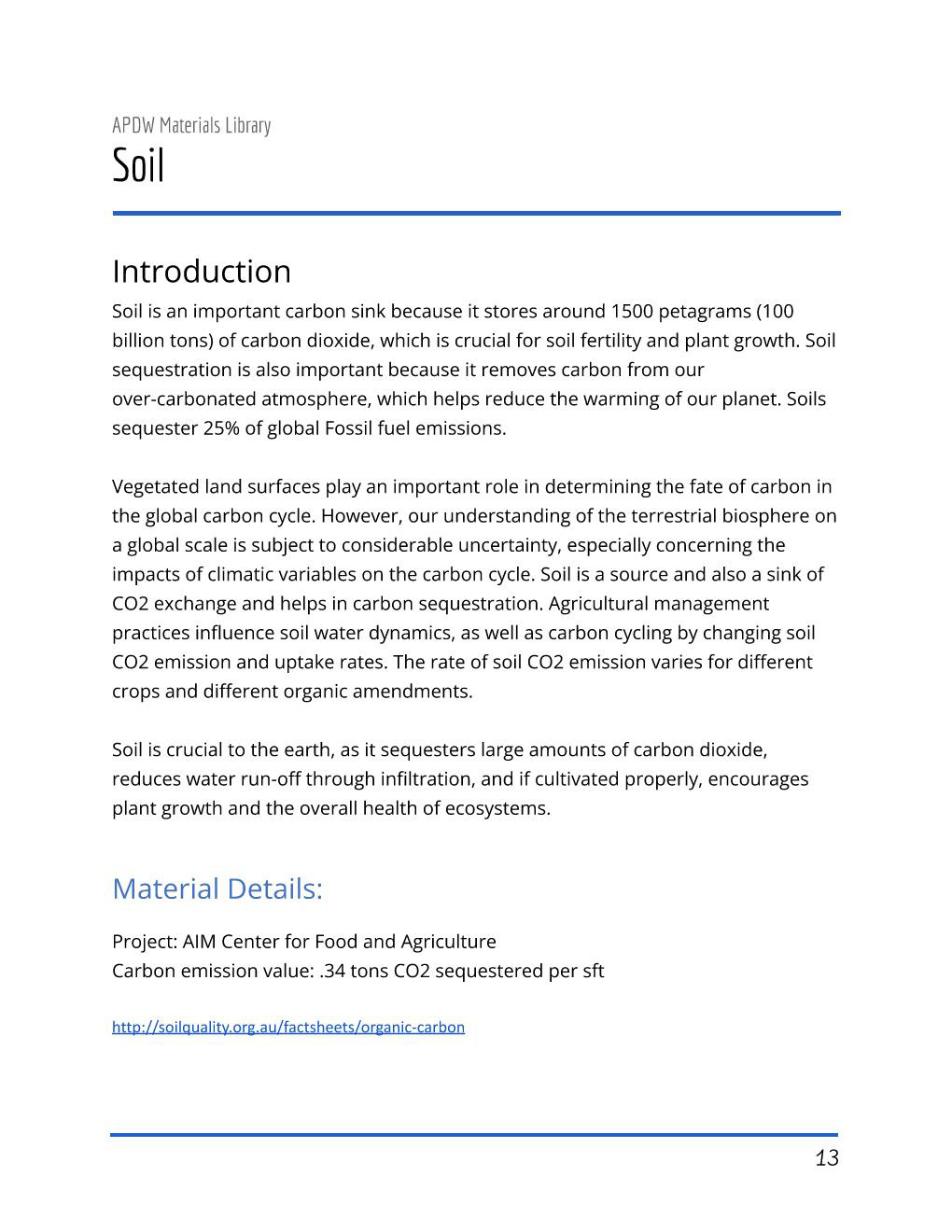
APDW - Soil summary page
The scorecards below are generated from the Pathfinder app to show three variations (from the AIM Farmer's market in the Marin Project). With every substitution, we can calculate the impact of the project and turn it from a socially conscious project to an environmentally conscious one as well.
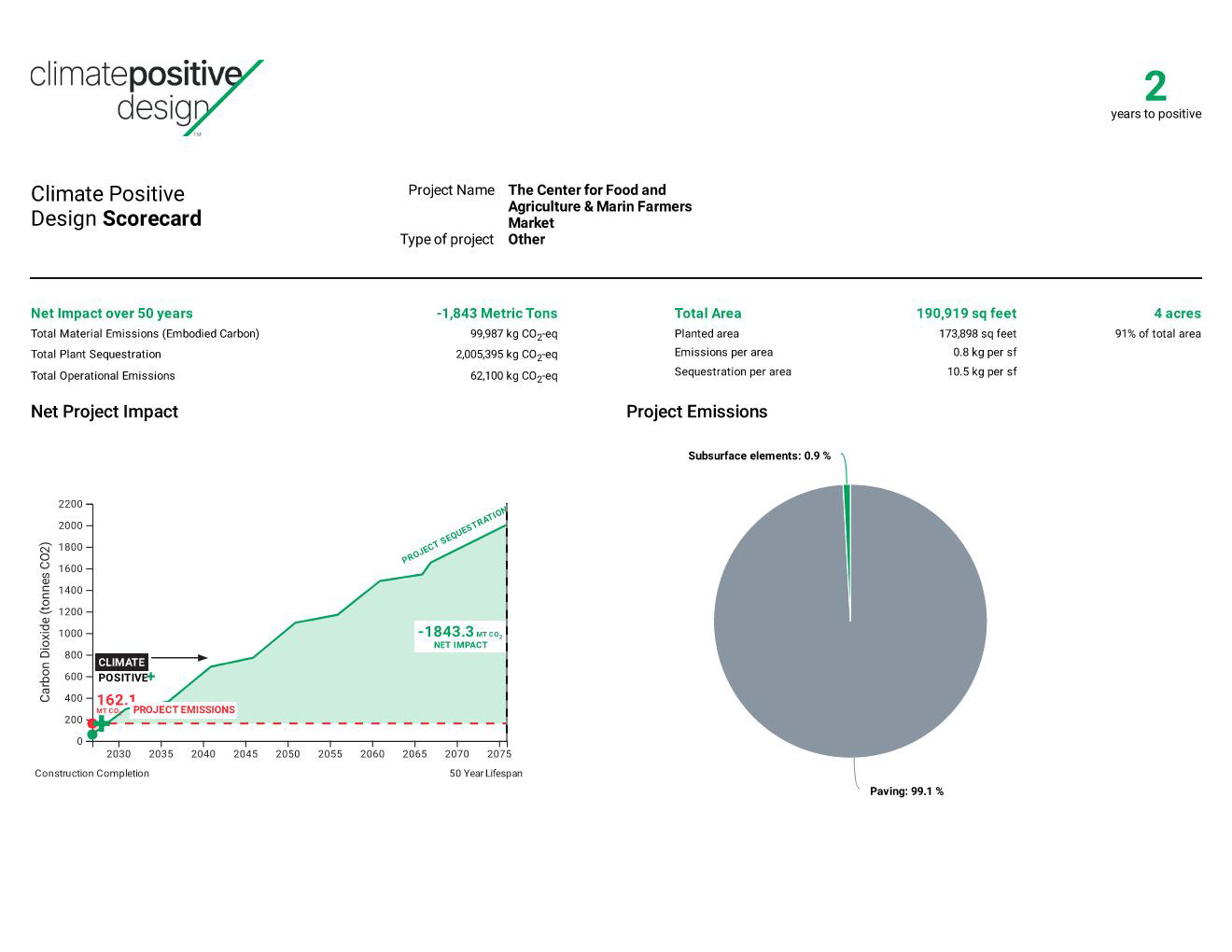
APDW - Project pathfinder report
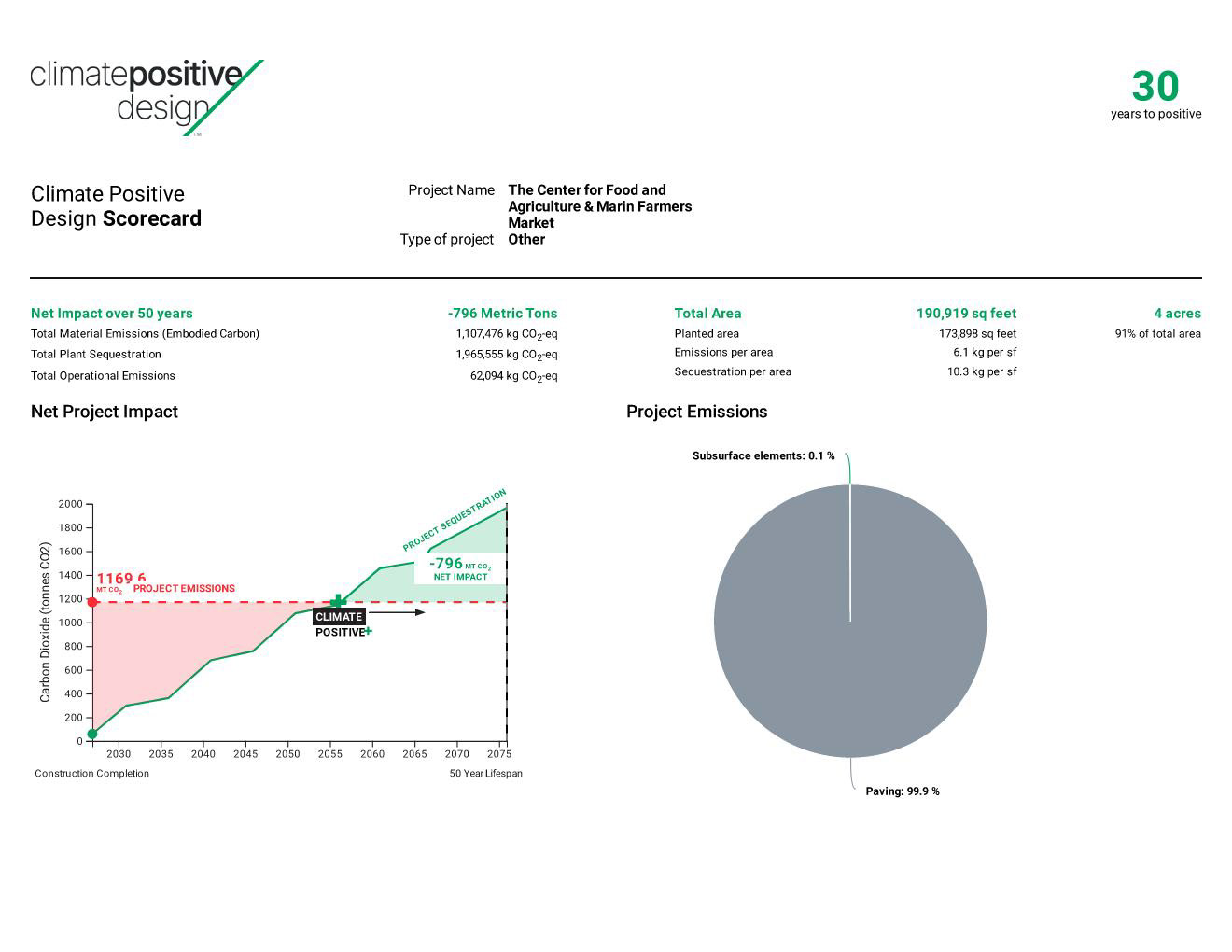
APDW - Project pathfinder report V2.0
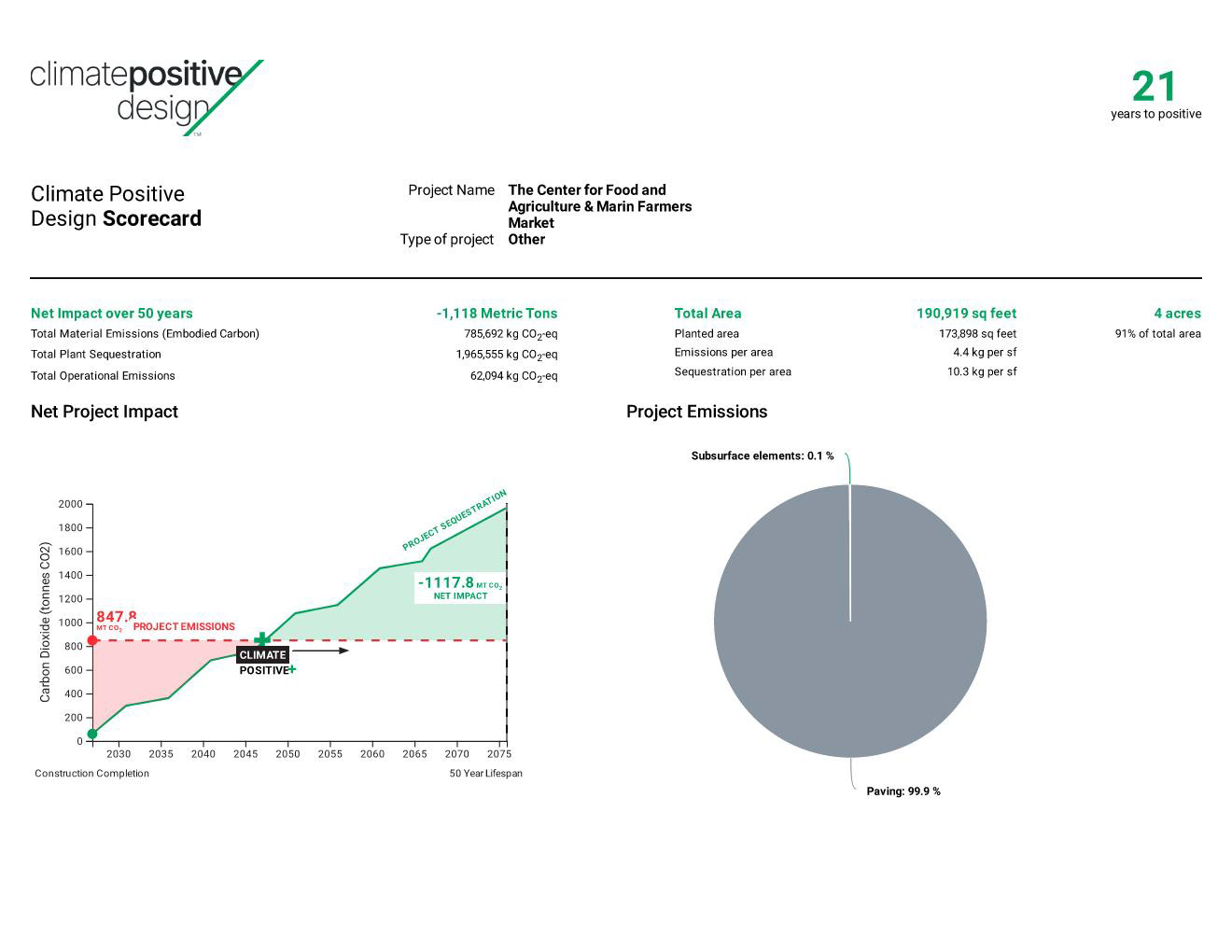
APDW - Project pathfinder report V3.0

APDW - Project pathfinder analysis
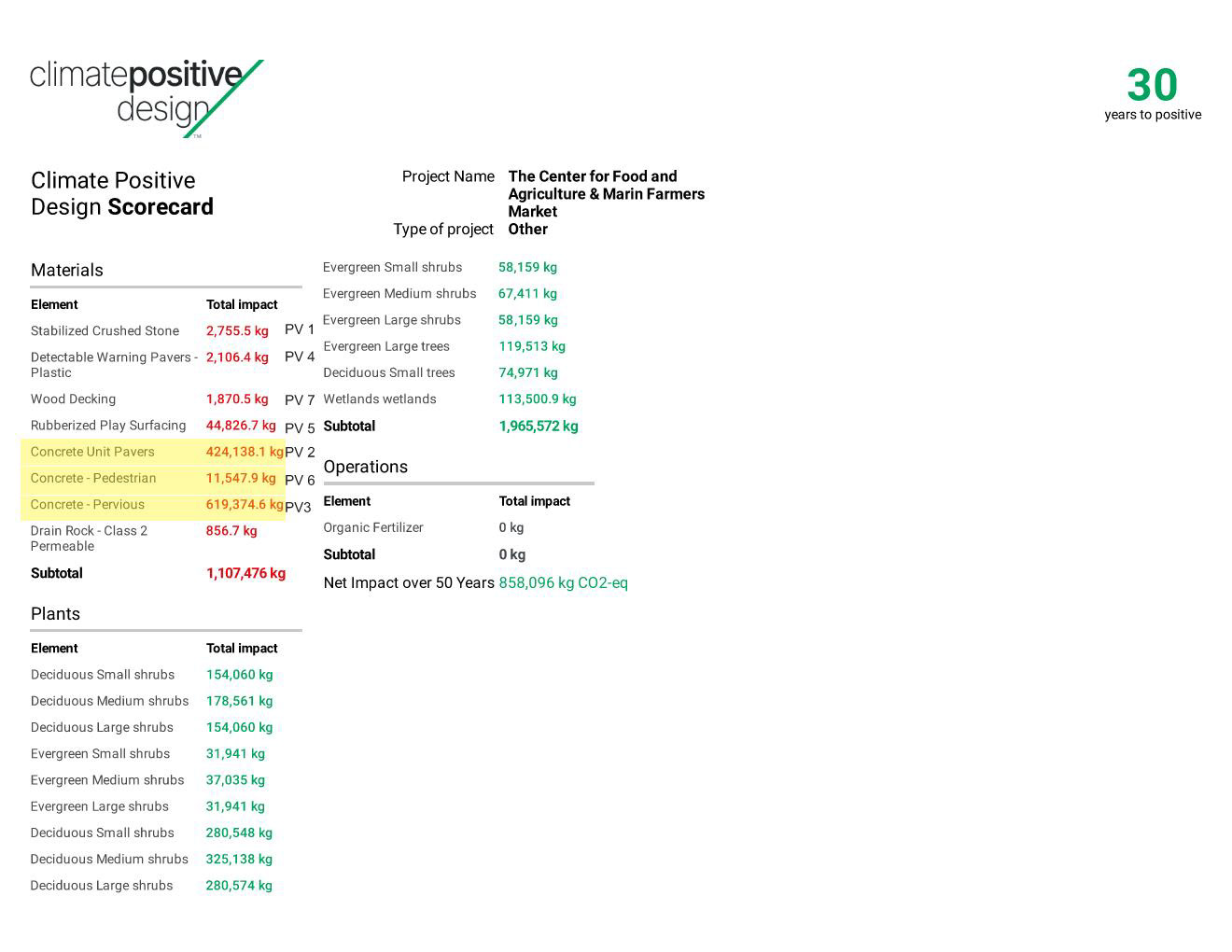
APDW - Project pathfinder analysis V2.0
